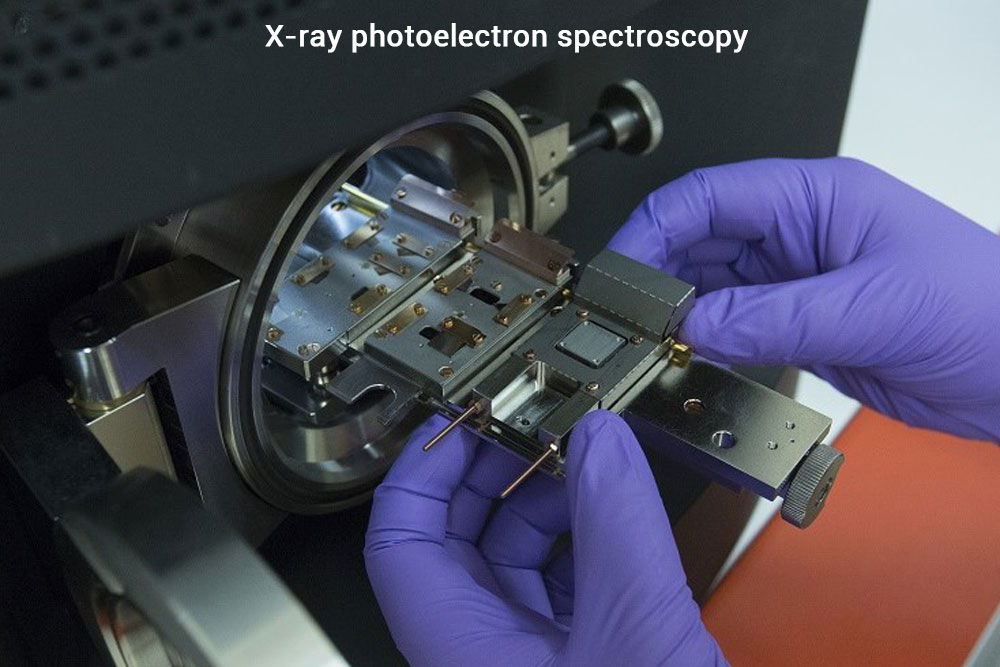X-Ray Photoelectron Spectroscopy
When it comes to analyzing the structure of anything, say a glass container, a skyscraper, or a simple piece of paper, our eyes are enough. We see the texture and feel the quality of it to understand basic information about it. But what if a requirement arises for you to analyze the structure of an atom? Would you be able to use your eyes and figure this out?
Obviously not, but thanks to technology there are techniques available that can. X-ray photoelectron spectroscopy (XPS) is a technique used to analyze the structure of an atom or to go deeper to get information on its electronic structure. This technique is based on the photoelectric effect which is the key that helps identify the elements existing in any material. What covers its surface, what is its chemical state, electronic structure, and density. This exact technique is also called Electron Spectroscopy for Chemical Analysis (ESCA) and both techniques are the same.
Some of the materials that are analyzed through X-ray photoelectron spectroscopy are metal alloys, inorganic compounds, teeth, plant parts, bones, polymers, papers, woods, and a lot more.
This technique is often used to test the material of product samples. In fact, there are a series of X-ray spectroscopy methods that are used widely for engineering, archeology, and even astronomy.
How Does it Work?
Electrons are known to transition from one another when the atom is either bombarded with high-energy particles or is simply unstable. Once the electrons get well adjusted, these elements then absorb and release high-energy X-ray photons. The X-ray spectroscopy then measures any changes detected in the energy which further ahead helps in identifying what types of elements are involved and eventually understand how the respective atoms interact with different materials.
What Advantages Come with Using X-Ray Photoelectron Spectroscopy?
X-ray photoelectron spectroscopy is the preferred choice when it comes down to figuring out surface material or chemistry. Here are some of the advantages of using this technique:
Swift Results
If you choose to use the X-ray spectroscopy technique, the analysis of your material can be done and dusted within 30-45 minutes or within one day. However, this is subject to how experienced a material processing lab is and is only achievable with laboratories that have worked on several such projects and have diverse expertise in the usage of this technique.
Identifying Project Sample Deterrents
The X-ray spectroscopy technique helps identify if your product samples contain any kind of contaminant or deterrent which could cause disturbances in the manufacturing process. If metal interdiffusion is the problem, a material that is free of such deterrents can be created through the X-ray spectroscopy process after it generates an empirical formula.
Giving More Insight into the Medical Field
X-ray spectroscopy is also used for medical research and practice. An example of the same is CT scan machines. According to Phuong-Ang T. Duong, by collecting X-ray absorption spectra while conducting CT scans, one can get highly detailed information about what exactly is going on inside the body. All this while using lower radiation X-rays and less or no need for the usage of materials such as dyes.
Market Value and Potential
As per Stallion Market research reports, the X-ray spectroscopy market currently stands at USD 600 million and is estimated to reach USD 1.1 billion by the year 2030, with a compound annual growth rate of 6.5%.
Due to its increasing demand in the medical field, the estimated forecast only seems to be growing in number which indicates a great sore in future industry growth.
Click here to get your Free report sample or request a customized table of content.
Stallion market research (SMR) is one of the top Global Research Companies offering premium marketing reports and consulting services. SMRs Diverse expertise across all industries helps clients use our data to make informed decisions.
We offer consulting and syndicate services across all markets mainly:
- Healthcare Equipment reports Market Reports / Global / In US, UK, Germany, France, China, India, Japan, Korea, North America/ South America/ Asia Pacific / Middle East /Africa
- Healthcare Supplies Market Reports / Global / In US, UK, Germany, France, China, India, Japan, Korea, North America/ South America/ Asia Pacific / Middle East /Africa
- Healthcare Research reports/ Global / In US, UK, Germany, France, China, India, Japan, Korea, North America/ South America/ Asia Pacific / Middle East /Africa
- Healthcare imaging and diagnostics tools reports /Global / In US, UK, Germany, France, China, India, Japan, Korea, North America/ South America/ Asia Pacific / Middle East / Africa

